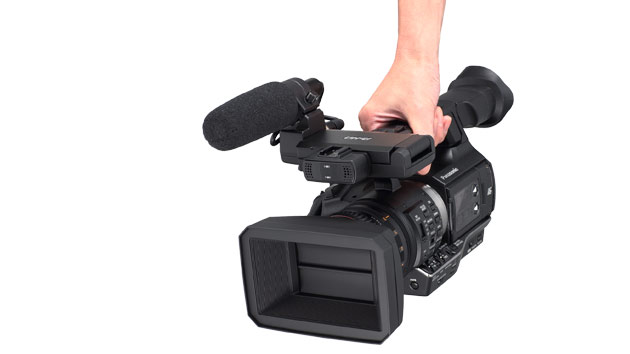Following up my initial impressions of Panasonic’s AJ-PX270 back in April, I have since had the opportunity to work extensively with the new camera shooting behind-the-scenes for Equals, a futuristic love story produced by Ridley Scott and starring Nicolas Hoult and Kristen Stewart.
Working for months day-in and day-out under great stress amid oppressive heat and humidity is bound to test the strengths and integrity of any pro-level camera. Indeed this is the only true test, as any camera can look great locked down in front of a test chart or facing the manufacturer’s scrupulously lit set at NAB. Try it traipsing around Japan in August and facing the rigors of 100º F temperatures and near 100% humidity while dodging tropical storms. It’s important to keep all of this in mind as I describe the merits and shortcomings of this remarkable little camera.
From long experience, I can say unequivocally that shooting behind-the-scenes on a crowded set is a proposition fraught with peril. I can still recall with horror the experience, many years ago, of impacting a major movie star’s forehead with the butt end of my Sony F900, a tall barge-like camera with a dangerous right-side blind spot. Recalling the precise circumstances of this near-career-ending calamity, I can see that, alas, I came up a bit too hastily to frame a shot at the same moment the movie icon moved in to seize a carrot stick from crafts services. Luckily, thanks to the actor’s inherent good nature, I lived to see another day but the lesson was learned: a compact camera is imperative when shooting around a buzzing, densely packed set.
Of course such a camera must also be versatile, offer good balance, be rugged as hell, and perform well in low light, especially given today’s dimly lit sets. In these critical areas, the new Panasonic PX270 fits the bill — and then some.
Whatever the specifics of an assignment, it goes without saying that shooters must select the right tool for the job. Just like you wouldn’t shoot a reality TV series like Taxicab Confessions with 12 Alexa XTs concealed in the back of a cab, you probably wouldn’t want to shoot the new Batman Returns Yet Again blockbuster with the PX270. But, given its intended applications in nonfiction/documentary/fly-on-the-wall type productions, the new camera’s diminutive profile and very high performance are close to ideal.
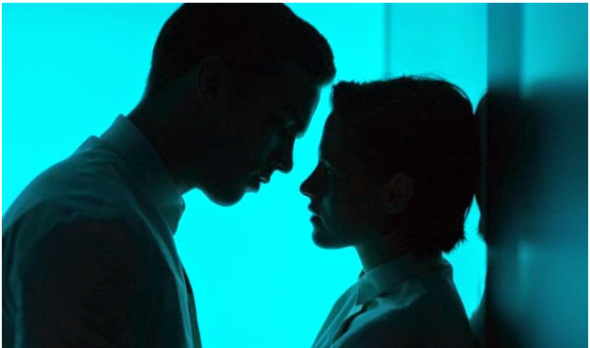
Whereas the 24fps movie featured a desaturated monotone look with a narrow focus, the featurette embraced the opposite look in order to provide visual separation between the two stories. I shot 30fps with a full color gamut and sharp deep focus. The Film-Rec gamma in the PX270 can produce exquisite pictures akin to a top-flight VariCam, but the camera’s traditional nonfiction HD gamma seemed more appropriate for the job.
Clearly the presence of a loose camera on set can be highly disconcerting to the director and actors. The 270’s tiny 1/3-type sensor is hardly the current fashion, but in this case the smallish imager is a clear advantage. The ability to find focus quickly at the long end of a 22x zoom, especially at full aperture, is critical, and greatly facilitated in this model. The downside of the smallish sensor is the reduced dynamic range. This can be practically addressed with an ultra contrast filter to mask noisy shadows and Dynamic Range Stretch (DRS), a feature used on the fly to constrain highlights while maintaining good shadow integrity. PX270 nonfiction shooters will want to assign DRS to one of the camera’s eight user buttons.
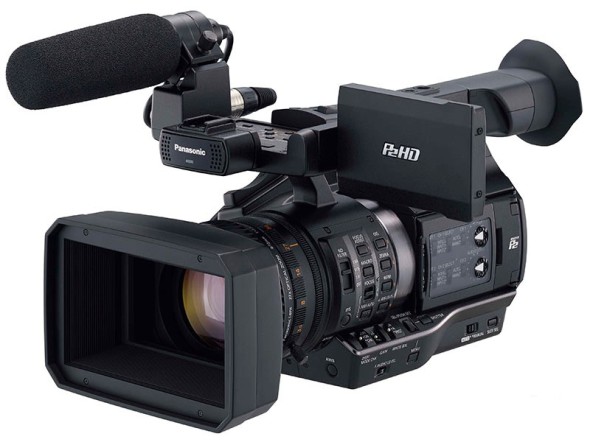
The PX270, fitted with a 22X zoom, can be very effective for capturing close-ups of the stars and the creative team across a crowded set. With optical image stabilization, the long zoom is indispensable for the low-profile documentary shooter. For the sake of compactness, the front element lens diameter in the PX270 has been narrowed to 72mm, a more convenient size perhaps for screw-in filters and accessories but not so great for lens performance. The 270 exhibits significantly more barrel distortion than the HPX250 at full wide position.
The visual character of Equals, as captured by cinematographer John Guleserian, featured a soft monotone color palette with extremely shallow focus. To provide contrast and separation between the movie and the behind-the-scenes featurette it was key that my images were consistently sharp, more loosely framed, and with deeper focus. I didn’t want my images to be confused somehow with the actual movie scenes when intercut in the featurette.
The PX270’s zoom rocker control is much smoother and more precise than previous Panasonic compact camcorders. The integrated zoom has been entirely redesigned. The permanently mounted optics now allow the camera to correct internally for most chromatic aberrations and breathing issues that are bound to arise in such a long-focal-length lens. Still, given the effective zoom range of 28mm–616mm, there is a noticeable loss of speed at maximum magnification, about two stops from f1.6 – f3.2. However, the loss of contrast is less dramatic than might be expected. The PX270’s DSP maintains good contrast and sharpness throughout the zoom range, a major consideration given my reliance on the longer focal lengths.
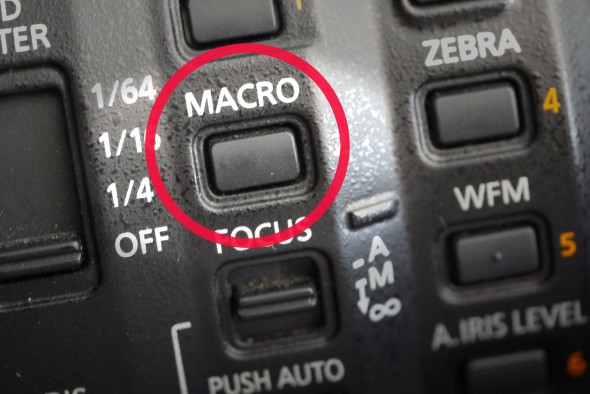
The PX270’s Macro function is enabled by a side user button. I prefer the previous model (HPX250) system of engaging the Macro without a button push. I’ve got enough to think about on a busy set without having to remember to enable or disable the Macro feature. Focus assist, macro, waveform, image stabilization, level gauge, among other things, are all enabled via a suite of user buttons at the side and back of the camera.
The camera’s sophisticated processing is evident in images that exhibit excellent shadow integrity and good contrast even in very low light. In a feature production like Equals, with name-brand actors, no one wants to see the star talent exhibiting flesh tones with an objectionable red shift in the dark shadows, a common occurrence, unfortunately, in less sophisticated camcorders.
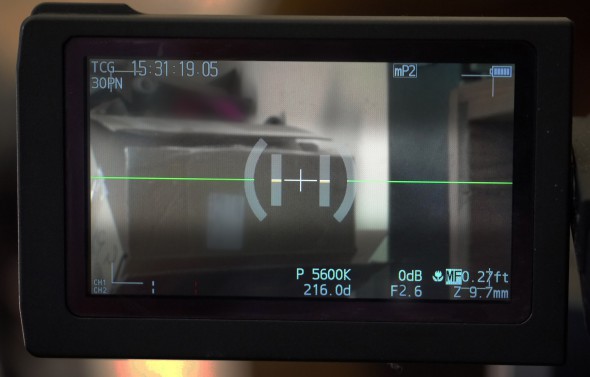
The level gauge, conveniently assigned to a user button, is effective but appears huge in the middle of the frame. I prefer the less intrusive system in the Alexa that displays at the lower edge of the viewing area.
The PX270 shooting AVC-Intra at 100 Mbps 4:2:2 effectively precludes such compression-related calamities. The 10-bit recording format is ideal for most nonfiction applications, providing an efficient post-production environment for color-correction and finishing while still maintaining a reasonable file size for ease of workflow. The AVC-Intra format becomes even more robust and less prone to visible defects with the introduction of a 200 Mbps paid upgrade for the PX270.

The PX270 features a sophisticated DSP that produces very sharp images. I found even a moderate master detail setting of zero to be excessive. Given a range of -31 to +31 the MASTER DTL set to -18 offered the appropriate amount of edge enhancement.
